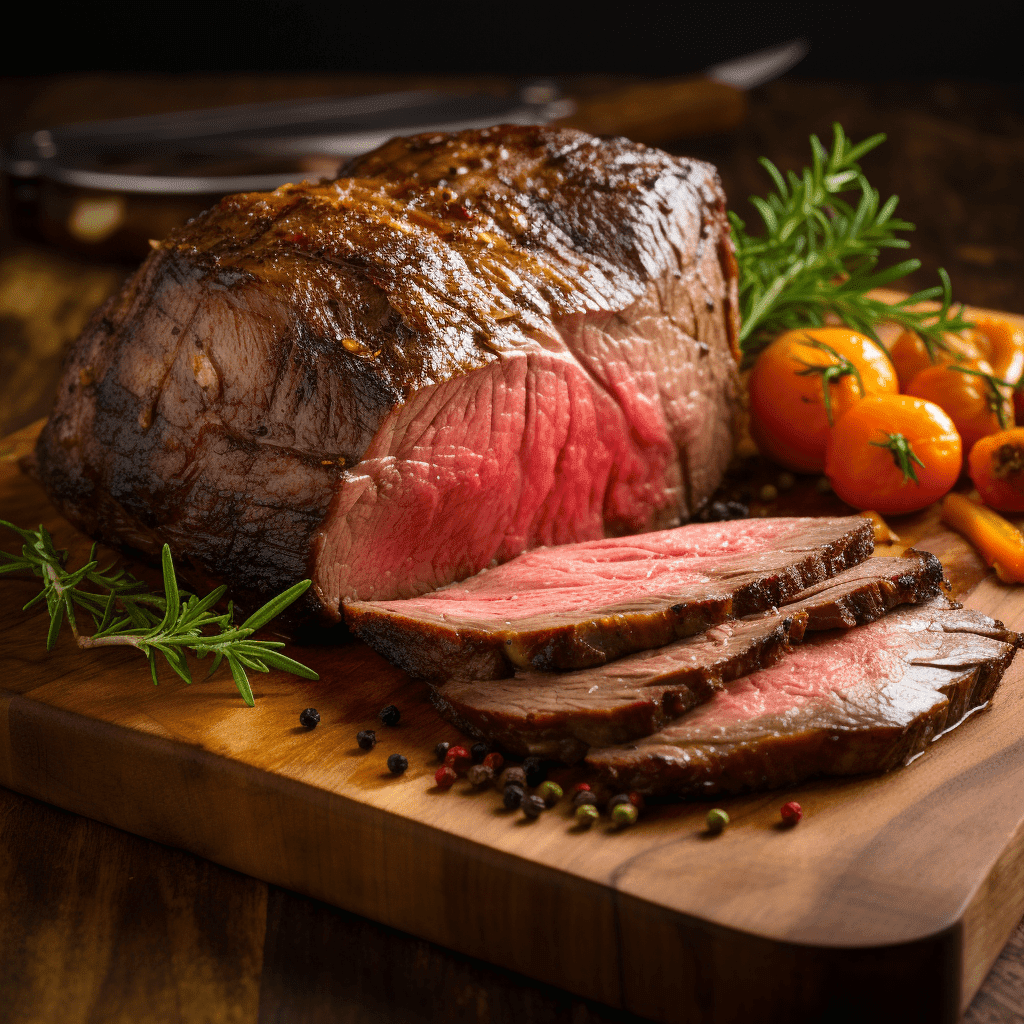Welcome to our cooking guide, where we’ll find out how to prepare a rump roast, a favorite in kitchens around the world for its hearty flavors. Perfecting this recipe is crucial for anyone looking to improve their cooking skills and impress their dinner guests. We’ll focus on choosing the best ingredients and techniques to take a simple meal and make it extraordinary.
Table of Contents
How to Cook a Rump Roast – The Best Recipe Ever
- What You Need to Know Before Cooking Rump Roast
- Essential Ingredients and Tools
- Step-by-Step Recipe for Cooking the Perfect Rump Roast
- Tips and Tricks for the Best Rump Roast
- Common Mistakes to Avoid
- Variations of the Rump Roast Recipe
- Conclusion
What You Need to Know Before Cooking Rump Roast
Understanding the fundamentals of a rump roast is the first step towards culinary success. This cut, located at the hindquarters above the leg, is characterized by its lean texture. Although less marbled than other cuts, the right preparation can yield a tender and flavorful result.
Selecting a high-quality rump roast is critical. Opt for a cut that is uniform in shape to ensure even cooking and look for a piece with a vibrant color and a layer of fat, which will imbue the meat with flavor as it cooks. Consulting with a butcher can provide valuable insights into choosing the best piece for roasting.

Essential Ingredients and Tools
Achieving the best rump roast requires certain essential ingredients and kitchen tools:
- Ingredients: A 3-4 pound rump roast forms the base of our recipe, accompanied by kosher salt, black pepper, garlic powder, rosemary, thyme, olive oil, and red wine vinegar for the marinade.
- Tools: A reliable roasting pan and a meat thermometer are indispensable for this recipe, ensuring the roast is cooked accurately and to perfection.
Step-by-Step Recipe for Cooking the Perfect Rump Roast
Step 1: Preparation
Begin by marinating the roast to infuse it with robust flavors. Combine olive oil, red wine vinegar, minced garlic, rosemary, thyme, salt, and pepper, and coat the roast evenly. For optimal flavor, marinate in the refrigerator for at least two hours, though overnight is preferable.
Step 2: Cooking Method
Preheat your oven to 325°F (163°C). Initially, sear the roast on all sides in a hot skillet with oil until browned—this technique seals in the flavors. Transfer the seared roast to your roasting pan and cook in the oven for approximately 90 minutes, or until the meat thermometer indicates 135°F (57°C) for medium-rare or 145°F (63°C) for medium.
Step 3: Checking Doneness
A meat thermometer is essential for ensuring the roast is cooked to the desired level. Insert it into the thickest part of the roast to obtain an accurate reading, avoiding overcooking or undercooking.
Tips and Tricks for the Best Rump Roast
Enhance your rump roast with these professional tips:
- Seasoning and Marinades: Experiment with different seasonings and marinades. Adding Worcestershire sauce or Dijon mustard can intensify the flavors.
- Cooking Techniques: Allow the roast to rest covered with foil for about 15 minutes after removing it from the oven. This step helps redistribute the juices, ensuring each slice is moist and flavorful.
What are the Common Mistakes to Avoid
When cooking a rump roast, timing and temperature are your compass and clock—they guide you to perfection but can just as easily lead you astray.
One common pitfall is using too high heat, which can cause the connective tissues in the rump roast to tense up, resulting in tough meat.
Similarly, undercooking can leave your rump roast underwhelming and tough, so always keep that meat thermometer handy!
Then there’s the slicing—always slice against the grain. Slicing incorrectly can make even the most tenderly cooked roast feel chewy. It’s all about how you frame it, both in photography and in meat cutting!

Variations of the Rump Roast Recipe
There’s more than one way to cook a rump roast, much like there are endless angles to take a fantastic photo. If you’re a fan of slow cooking, why not try preparing your rump roast in a slow cooker? This method allows the connective tissues to break down gradually, resulting in incredibly tender meat—perfect for those who love their beef to melt in the mouth.
For those who appreciate a global twist, consider incorporating spices and herbs from different cuisines. A Moroccan rub or an Argentine chimichurri can transform your standard rump roast into an international delicacy. Experimenting with flavors is like playing with different lenses and settings on your camera—you never know what masterpiece you’ll end up with!
Conclusion
We’ve covered the essentials from selecting the right cuts of beef to mastering the cooking method, from high heat searing to slow-roasted goodness. I encourage you to take these tips and make them your own.
Now, I’d love to hear from you! Have you tried a tip roast or perhaps ventured into cooking a chuck roast with a technique you learned today?
How to Cook A rump Roast: FAQs
What is the best cooking temperature for a rump roast?
The optimal oven temperature for cooking a rump roast is 325°F (163°C). This lower temperature allows the roast to cook evenly without drying out.
How long should I marinate a rump roast?
Marinate the rump roast for at least two hours, but for best flavor results, marinate it overnight in the refrigerator.
Can rump roast be cooked in a slow cooker?
Yes, rump roast can be successfully cooked in a slow cooker. Set the slow cooker on low and cook for 8-10 hours to allow the connective tissues to tenderize gradually.
What are some good side dishes to serve with rump roast?
Good side dishes for rump roast include roasted vegetables, mashed potatoes, or a fresh garden salad to complement the richness of the meat.
How do I know when the rump roast is done cooking?
Use a meat thermometer to check the doneness of the rump roast. Aim for an internal temperature of 135°F (57°C) for medium rare or 145°F (63°C) for medium.
Buy Rump Roast online right now in USA →

About Christo Barnhoorn
Christo Barnhoorn, a seventh-generation rancher, carries a legacy of tradition and ambition from his upbringing on a South African sheep farm. Immersed in the practices of sheep farming, he developed a deep understanding of the industry. With a desire to expand his horizons, Christo moved to the United States and established his own ranch in New Mexico. There, he successfully combined his traditional knowledge with innovative practices, transforming his venture into a flourishing online meat retailer.
Related articles
Mastering Prime Beef Cuts: A Guide for Culinary Excellence
Mastering Brisket: A Complete Guide to Cooking and Enjoying this Texas BBQ Staple


